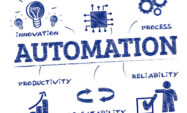SAP Supply Chain Management
SAP APO | SAP Asset Management | SAP Business Network | SAP Digital Manufacturing Cloud | SAP Digital Twin | SAP EWM | SAP IBP | SAP Inventory Management | SAP Label Printing | SAP Logistics | SAP Manufacturing | SAP Manufacturing Automation | SAP MES | SAP MII | SAP MM | SAP MRO | SAP MRP | SAP Order Management | SAP Plant Maintenance | SAP PLM | SAP Production Planning | SAP S&OP | SAP SD | SAP SPM | SAP Supply Chain Planning | SAP Track and Trace | SAP Transportation Management
Filter By
Browse By
- SAP Analytics and AI
- SAP Application Development and Integration
- All SAP Application Development and Integration
- SAP ABAP
- SAP ABAP Development Tools
- SAP ABAP Test Cockpit
- SAP API Management
- SAP BAPI
- SAP Basis
- SAP BRF
- SAP Business Application Studio
- SAP CMS
- SAP Design Studio
- SAP Development Tools
- SAP DevOps
- SAP EAI
- SAP EDI
- SAP Extension Suite
- SAP Fiori
- SAP Fiori Elements
- SAP Integration Suite
- SAP Low Code Application Development
- SAP Low Code Automation
- SAP Netweaver
- SAP Release Management
- SAP UI5
- SAP Web Application Server
- SAP Web IDE
- SAP Business Process Management
- SAP Center of Excellence
- SAP CIO
- SAP Customer Experience
- SAP Data and Data Management
- All SAP Data and Data Management
- SAP BW
- SAP BW/4HANA
- SAP Crystal Reporting
- SAP Data Archiving
- SAP Data Center
- SAP Data Governance
- SAP Data Integration
- SAP Data Migration
- SAP Data Quality
- SAP Data Services
- SAP Data Strategy
- SAP Data Visualization
- SAP Data Warehouse Cloud
- SAP DMS
- SAP Document Control
- SAP EIM
- SAP ETL
- SAP ETL Tools
- SAP HANA
- SAP HANA Administration
- SAP HANA Deployment Infrastructure
- SAP HANA Studio
- SAP Master Data
- SAP Master Data Governance
- SAP MDM
- SAP Enterprise Architect
- SAP Enterprise Asset Management
- SAP ERP
- SAP Finance
- All SAP Finance
- SAP Accounting
- SAP AR AP
- SAP Asset Accounting
- SAP Billing Systems
- SAP BPC
- SAP BRIM
- SAP Cash Management
- SAP Central Finance
- SAP Controlling
- SAP COPA
- SAP Cost Center Accounting
- SAP e-invoicing
- SAP FICO
- SAP Finance Automation
- SAP Financial Closing Cockpit
- SAP Financial Consolidation
- SAP Financial Planning
- SAP FX Risk
- SAP General Ledger
- SAP Global Tax Management
- SAP Hyperion
- SAP Order to Cash
- SAP Payment Processing
- SAP Profitability Analysis
- SAP Rebate Management
- SAP S/4HANA Finance
- SAP Universal Journal
- SAP Governance Risk and Compliance
- SAP Human Capital Management
- SAP Intelligent Technologies
- SAP Platform and Technology
- All SAP Platform and Technology
- SAP Business Technology Platform
- SAP Cloud Connector
- SAP Cloud Integration Platform
- SAP Cloud Migration
- SAP Cloud Platform
- SAP Cloud Providers
- SAP Cloud Strategy
- SAP Container Platform
- SAP Digital Asset Management
- SAP Digital Integration Hub
- SAP Digital Signature
- SAP HANA Enterprise Cloud
- SAP HEC
- SAP Hyperscalers
- SAP Infrastructure
- SAP Messaging
- SAP Smart Forms
- SAP Quality and Testing
- SAP Security
- SAP Spend Management
- SAP Supply Chain Management
- All SAP Supply Chain Management
- SAP APO
- SAP Asset Management
- SAP Business Network
- SAP Digital Manufacturing Cloud
- SAP Digital Twin
- SAP EWM
- SAP IBP
- SAP Inventory Management
- SAP Label Printing
- SAP Logistics
- SAP Manufacturing
- SAP Manufacturing Automation
- SAP MES
- SAP MII
- SAP MM
- SAP MRO
- SAP MRP
- SAP Order Management
- SAP Plant Maintenance
- SAP PLM
- SAP Production Planning
- SAP S&OP
- SAP SD
- SAP SPM
- SAP Supply Chain Planning
- SAP Track and Trace
- SAP Transportation Management
- SAP System Administration
SAP Supply Chain: Supply Chain Management
A well-managed supply chain can significantly reduce a company’s operating expenses and increase profits. A supply chain requires active management because it is affected by many factors outside the control of the business. Current events causing global supply chain disruptions include the Russia-Ukraine War and the continuing effects of COVID-19.
SAP Supply Chain: Supply Chain Management
A well-managed supply chain can significantly reduce a company’s operating expenses and increase profits. A supply chain requires active management because it is affected by many factors outside the control of the business. Current events causing global supply chain disruptions include the Russia-Ukraine War and the continuing effects of COVID-19.
Supply chain management is the flow of goods or services between businesses and various locations to get goods to consumers faster and at less cost. Supply chain management encompasses a thread of activities from design and manufacturing to delivery and operations.
Components to enable a resilient and sustainable supply chain management process are:
- Designing recyclable and sustainable products
- Delivering products with low carbon impact
- Planning to reduce emissions and ethically source materials
- Operating in an energy efficient and safe manner
- Manufacturing with minimal waste and environmental impact.
Accurate information helps manufacturers and retailers produce and transport only what they can sell, eliminating unnecessary expenses. Consider simplification by integrating demand planning in the cloud. Predictive analytics, automation, and Internet of Things (IoT) technologies can connect and simplify processes, allowing you to gain visibility across forecasting, response and supply, replenishment, and inventory.
Key Capabilities of Supply Chain Management:
- Supply Chain Planning: Agile market-driven plans with visibility, collaboration, and intelligence.
- Supply Chain Logistics: Fast, efficient, and sustainable logistics.
- Manufacturing: Streamlining with artificial intelligence, loT, and integration.
- Product Lifecycle Management: Connecting systems, people, and processes with end-to-end digital innovation.
- Enterprise Asset Management: Improving asset performance and reliability.
Benefits of Supply Chain Management:
- Optimizing the flow of materials, products, and information.
- Improving data visibility.
- Enhancing financial practices and cost cutting.
- Improving vendor relationships.
- Operating with lean and on-demand inventory.
- Reducing liability and risk.
Key Considerations for SAPinsiders
- How to Deliver Greater Visibility into the Operational KPIs that Drive Your Business. In this webinar, hear insights from SAP around how to build a powerful analytics foundation. Discover how to focus less on historical KPI’s and more on predictive process automation, how to reprioritize KPIs that show historical performance, develop operational decision support for end-to-end supply chain processes, and stop development of custom reporting.
- 5 Ways to Enhance Your SCM with Smart Data. Explore expert insights from Robert Brice, President and CTO, RFgen. Start with the basics for a digital transformation of your supply chain, discover how to gain competitive advantage by implementing efficiencies, address inefficiencies, shortage of labor, and address security.
- Salling Group Expands Its Market Reach With SAP. In this article, see how Salling Group used SAP ERP to ensure data uniformity, enhance warehouse efficiency, and consolidated logistics transactions with Redwood.
129 results
-

- SAP Supply Chain Management
 Premium
Premium
Demand-Driven Planning for S/4HANA and ERP
Published: 21/February/2023
Reading time: 3 mins
Demand-driven replenishment, demand-driven planning, or demand-driven MRP help in efficiently planning and managing supply chains based on customer demand, as opposed to traditional MRP procedures. DDP decouples material flows, makes them less vulnerable to supply chain disruptions, and ensures the availability of relevant products through dynamically managed buffers. In this article, know how decoupling material…
-

Vari Optimizes Supply Chain Through Digital Transformation
Published: 15/February/2023
Reading time: 1 min
Vari’s move from manual demand planning to SAP Integrated Business Planning (IBP) solutions culminated in many advantages – not just more timely and more reliable information for decision making. Read here about all the value-driven results they gained from this effort.
-

- SAP Supply Chain Management
 Premium
Premium
MSA Safety Reacting Quickly to Market Disruptions
Published: 15/February/2023
Reading time: 1 min
MSA Safety gained greater visibility into their global supply chain by scaling for future growth with SAP Integrated Business Planning (IBP), allowing them to quickly react to COVID-19’s market disruptions. Read here about all the value-driven results they gained from this effort.... Mastering SAP Premium Access Membership Required You must be a Mastering SAP Premium…
-
-

Charlotte Pipe Increases Service Levels with IBP
Published: 15/February/2023
Reading time: 1 min
Charlotte Pipe deployed a comprehensive supply chain solution backboned by SAP Integrated Business Planning (IBP) to maintain pace with a booming market by aligning people, process and technology. Read about all the value-driven results they gained from this effort by clicking here.
-

- SAP Supply Chain Management
 Premium
Premium
Lead-Time and On-Time, In-Full: Essential Metrics for Supply Chain Success
Published: 01/February/2023
Reading time: 6 mins
Insufficiencies in supply chains can occur due to a variety of factors, such as inadequate capacity, delays in transportation or production, or issues with suppliers. Supply chain insufficiencies can cause several challenges for businesses. These can pertain to lost sales, customer dissatisfaction, and damage to the company’s reputation. In addition, supply chain inefficiencies can result…
-

- SAP Supply Chain Management
 Premium
Premium
Building a Digital Framework for the Supply Chain
Published: 18/January/2023
Reading time: 8 mins
Companies need to align their strategic and operations plans and find ways to maximize their working capital investments to ensure that they get the products they want when they want them. They also need to orchestrate the transition from planning to execution, remove fixed lead times, and balance agility and efficiency. With fast and responsive…
-

- SAP Supply Chain Management
 Premium
Premium
How Mobile Automation and Digital Resilience Will Drive Growth: 4 Trends to Consider in 2023
Published: 09/January/2023
Reading time: 5 mins
Supply chain issues and surging customer demand are just a few of the many challenges companies face. While some of the external factors affecting organizations are outside of their control, organizations can take proactive steps to increase agility. This article discusses the four key trends organizations should consider for creating resilient, growth-focused organizations. Mastering SAP…
-
-

- SAP Supply Chain Management
 Premium
Premium
Buying Channels – The Key to Frictionless Procurement
Published: 13/December/2022
Reading time: 6 mins
Organizations are increasingly looking for ways in which they can procure products or services in a cost-effective way. However, with multiple products or service categories and requirements in an organization’s portfolio, a one-size-fits-all purchasing strategy does not always work. In this article, learn how organizations can streamline their procurement processes through buying channels, and get…
-

Supply Chain Improvement is a Sustainability Investment
Published: 01/December/2022
Reading time: 1 min
Sustainability is now in the everyday business lexicon—everyone wants to say they’re doing it and most companies’ annually stated goals show it as a high priority. But it is important to understand both how differently the term is defined and what “hard” metrics are being employed to demonstrate and measure the actual progress being made…
-

Accelerate Supply Chain Transformation and Innovation
Published: 09/November/2022
Reading time: 1 min
In today’s uncertain economic climate, companies cannot wait years or even months to realize the benefits of supply chain digitalization. They require modular, interoperable solutions that can be implemented quickly to deliver responsiveness and resilience. These solutions must address the most critical needs of businesses by enabling the rapid deployment of essential supply-chain functionality in…
Become a Member
Unlimited access to thousands of resources for SAP-specific expertise that can only be found here.
Related Vendors
Your request has been successfully sent

